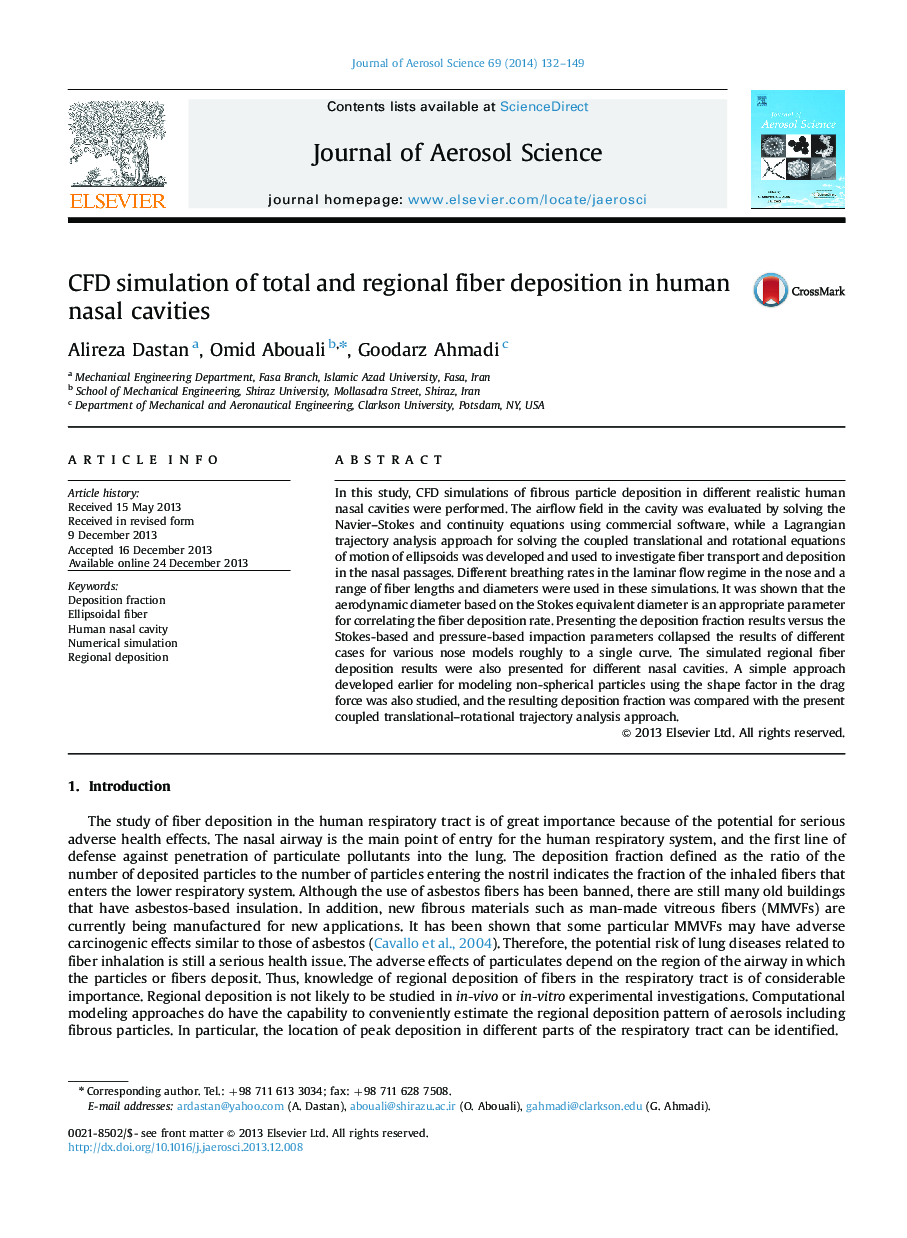| Article ID | Journal | Published Year | Pages | File Type |
|---|---|---|---|---|
| 6344519 | Journal of Aerosol Science | 2014 | 18 Pages |
Abstract
In this study, CFD simulations of fibrous particle deposition in different realistic human nasal cavities were performed. The airflow field in the cavity was evaluated by solving the Navier-Stokes and continuity equations using commercial software, while a Lagrangian trajectory analysis approach for solving the coupled translational and rotational equations of motion of ellipsoids was developed and used to investigate fiber transport and deposition in the nasal passages. Different breathing rates in the laminar flow regime in the nose and a range of fiber lengths and diameters were used in these simulations. It was shown that the aerodynamic diameter based on the Stokes equivalent diameter is an appropriate parameter for correlating the fiber deposition rate. Presenting the deposition fraction results versus the Stokes-based and pressure-based impaction parameters collapsed the results of different cases for various nose models roughly to a single curve. The simulated regional fiber deposition results were also presented for different nasal cavities. A simple approach developed earlier for modeling non-spherical particles using the shape factor in the drag force was also studied, and the resulting deposition fraction was compared with the present coupled translational-rotational trajectory analysis approach.
Related Topics
Physical Sciences and Engineering
Earth and Planetary Sciences
Atmospheric Science
Authors
Alireza Dastan, Omid Abouali, Goodarz Ahmadi,
